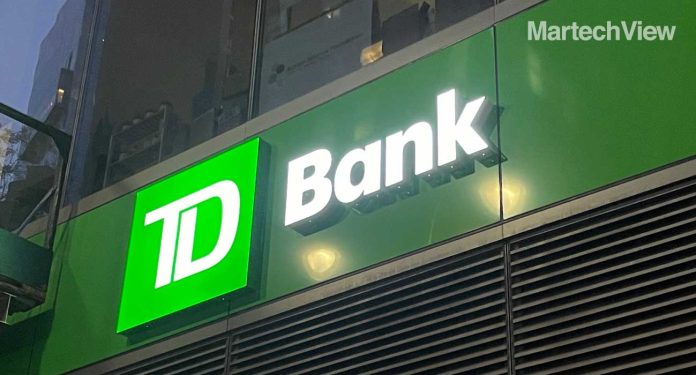TD Bank’s “Own It” ad campaign uses humor to promote its new Partial Shares product, letting young investors buy fractions of stocks and ETFs.
TD Bank is a major banking institution on both sides of the U.S.-Canada border. In the country of its founding, the Toronto-based company is one of the Big Five banks, while it ranks in the top ten in the U.S., depending on metrics. While other advertisers test their new ideas in global markets before bringing them stateside, TD Bank has a major non-U.S. market to use as its advertising playground.
That is the case in two efforts that TD Bank recently launched in Canada: an “Own It” campaign to promote the bank’s new Partial Shares investing product and a “Visible Billboards” activation to raise the profile of one of the company’s purpose-driven initiatives. Both speak to how banking and the role of financial institutions have changed for younger, more diverse consumers.
“How you use that physical presence today is very distinctive than how we used to, and we need to grow and be with our customers and future customers where they are,” said Global Chief Marketing Officer Tyrrell Schmidt.
Breaking barriers
Partial Shares is an example of how investing is changing. The first such offering from one of the Big Five banks, the product allows consumers to buy and sell a fraction of stocks and exchange-traded funds (ETFs), giving investors access to blue-chip stocks at a lower price. The product is intended for Gen Z and millennial consumers who are new to investing or think it is out of reach.
Also Read: StreetEasy Illustrates House-Hunting Odyssey as Renaissance Art
To promote Partial Shares, TD Bank teamed with Ogilvy Canada for “Own It,” a humorous 60-second spot focusing on a quirky young investor who fully embraces the perks of partial ownership of an airline, baseball team, space company, and entertainment corporation. In the latter case, Partial Shares take the character to the set of a fantasy epic.
“The old concept around the right product, right time, the right customer through the right channel still really exists,” Schmidt said about the approach to marketing Partial Shares.
“We look at customer experience generally. What we know is simple: communication matters. Banking can be complicated, and people want to understand what you’re telling them,” the executive continued. “[“Own It”] is just a great example of having someone come in and demonstrating in a relatively light but understandable and digestible way.”
For Ogilvy, Partial Shares provided an opportunity to create advertising around a true differentiating product, which is not always the case in Canadian banks. The agency wrote a script focused on a fish-out-of-water character who oversteps her boundaries because she’s so excited to break through a barrier. The tone is playful but not slapstick.
“We have something called ‘grounded optimism’ with TD, where we like to exaggerate and be a little bit hyperbolic, but never in a way that goes so absurdist or so far out of reality that the everyday Canadian can’t see themselves in it,” said Francesco Grandi, chief creative officer of Ogilvy Canada.
Purposeful innovation
While Partial Shares and the “Own It” campaign aim to make banking more accessible to younger consumers, a different TD Bank effort aims to make it more accessible to a smaller subset of consumers: the visually impaired, specifically colorblind consumers.
“Visible Billboards” launched in Toronto’s Distillery District on Sept. 6, Color Blind Awareness Day. The out-of-home ads use the colored dot style used in tests for color blindness, but in a twist, the message—“If you can see this, it’s because we see you”—is only visible to color-blind viewers.
Also Read: Gmail Tabs: Still a 2013 Problem?
The billboard effort was inspired by the TD Accessibility Adapter, an online tool that enables users with disabilities to make the internet more accessible and responsive to their preferences. Originally developed as an internal tool, TD Bank has made it widely available as a Chrome extension.
“We think about purposeful innovation always. That’s always been who we are as a brand: being able to empathize and show the human side of banking by understanding the person behind it,” Schmidt said.
TD Bank has a heritage of being open and accessible to different consumers. The bank helped turn Toronto Pride into one of the biggest pride events in the world, and it has supported Indigenous banking and women in leadership. Despite doing 30 to 40 initiatives yearly, Ogilvy’s Grandi said that advertising is rarely part of the strategy.
“They almost do so much of it that they don’t know where to shine the spotlight on,” the executive said. “Being their agency partners, we’re always trying to tell them, ‘This is a really good story you should tell.’”
A North American brand
While color blindness lends itself to a creative out-of-home activation, future ads around the TD Accessibility Adapter could focus on other conditions, such as dyslexia or epilepsy. While it launched first in Canada, Grandi said it could work in the U.S., perhaps as a Times Square takeover in New York.
Such decisions, like which campaigns will run in the U.S. or Canada, make Schmidt’s job different from most brand marketers. However, TD Bank does have a “North America brand at its core,” she said, that seeks to enrich the lives of customers, colleagues, and communities—no matter where.
“Our brand promises to bring a human, empathetic approach to banking that is consistent. Having those things at the top of the house matters, especially when you share only one border,” the executive said.
Also Read: Hellmann’s Turns NFL Star’s Mayo Love into Fragrance
However, the U.S. and Canada have different cultures, regulatory environments, and competitive landscapes, preventing TD Bank from taking a ” one-size-fits-all” approach to marketing.
“There’s a lot that we do, especially in areas around how we think about citizenship and community, that we do bring to life on both sides of the border,” Schmidt explained. “Where possible, we prefer to be able to find those things, but I think it’s important that there’s alignment at the top of the house.”










